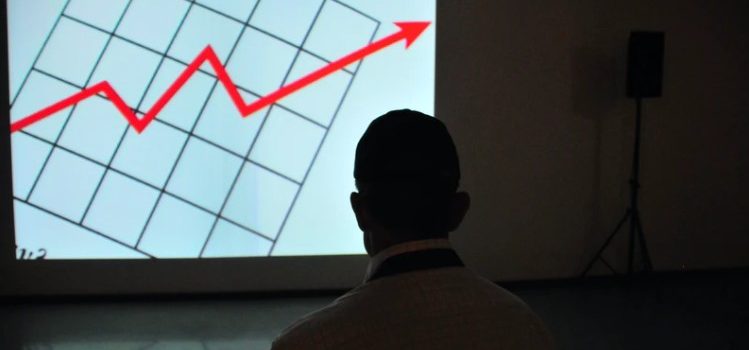

This article is an excerpt from the Shortform book guide to "Flash Boys" by Michael Lewis. Shortform has the world's best summaries and analyses of books you should be reading.
Like this article? Sign up for a free trial here .
What are stock market order types? Why are they so easily manipulated?
On the stock market, the most common order types are market orders, limit orders, and stop-loss orders. In Flash Boys, Michael Lewis says that because of the illegal practice of high-frequency trading, investors have found new and complicated ways to create order types for their own financial gain.
Learn the basics of stock market order types and how they’re being used in illegal ways.
What Are Stock Market Order Types?
Lewis describes the stock market order types as sets of instructions determining how traders place stock orders. For instance, a trader can use an order type to stipulate that her order goes through only if she’ll receive a rebate or to cancel her order if a larger order was about to go through.
Because of HFT, exchanges created unusual order types with complicated stipulations that would essentially place HF traders ahead of regular investors in priority, so that, for example, if an ordinary investor tried to buy 100 shares of a stock, an HF trader’s standing order could be activated to scoop up those shares first.
HF traders came up with complex order types that hardly anyone understood except for people whose job it is to specifically figure them out. As electronic trading became more popular, the number of order types increased from three to over 150. Lewis believes that most of these order types were actually unnecessary and gave HF traders more opportunities to exploit ordinary investors by gaining insight into their trading strategies and intentions.
| Additional Order Type Strategies Lewis defines order types but doesn’t explore an important related aspect of order types: order-flow trading (or tape reading), which is a trading strategy that involves analyzing the trades that other brokers place, as well as the impact of these trades on the prices of stocks. In order-flow trading, data—such as information about large orders being executed, the volume of buyers and sellers, imbalances between buyers and sellers of certain stocks, and types of orders placed—is published in a “footprint chart.” Brokers can then analyze this data to determine smart short-term strategy trades. Comparing certain order types can help traders trade more effectively. While humans can analyze this data, algorithms are inherently faster. |
Order-Type Baiting
Lewis explains that stock market order types are manipulated using order-type baiting, or when an HFT examines different order types—and the parameters that accompany them—to figure out the intentions of an investor. So, for example, an HF trader’s order type might alert an HF trader that an investor withdraws an order if another broker doesn’t act on it. If a broker does act on the order, HFT uses this information to front-run their order to other exchanges, forcing the investor to pay a higher price.
Because of order-type baiting, HFT accounted for 99% of all orders made, but only half of all completed trades. Lewis believes that most of the orders HF traders made were used to get as much information about investors (and their intentions to buy or sell) as possible, thus hurting ordinary investors.
| Order-Type Baiting as Game Theory Another way to think of HFT and order-type baiting is through the lens of game theory. In The Undercover Economist, Tim Hartford explains that game theory is a discipline adjacent to economics and mathematics, where a “game” is defined as an activity in which predicting another’s actions affects your own actions. Many everyday situations, like driving, are games. When you’re behind the wheel, you drive based on the rules of the road but also based on what behavior other cars on the road are exhibiting. If a car is driving erratically, or too quickly, you’ll likely switch into a more defensive driving mode. If a car in front of you is driving too slowly, you’ll attempt to pass. By analyzing and predicting the actions of investors through order-type baiting, HF traders—algorithmic, rational decision-makers—use this data to maximize their payoffs. |
A Solution to Stock Market Order Type Manipulation
To reduce information baiting, Katsuyama and his team limited the number of order types to three, as opposed to the 150 offered by other exchanges at the time. Lewis argues that fewer order types made trading more straightforward by encouraging investors who actually wanted to buy and sell stocks, instead of just using order types to glean information to trade with IEX. By limiting the number of stock market order types, IEX prevented HF traders from baiting information out of investors: HF traders had fewer ways of determining what stocks an investor wanted or how much an investor was willing to pay.
(Shortform note: While Lewis notes that IEX has three order types, the exchange has increased the number since the publication of the book. IEX now has three classes of order types—ones for standard and retail investing, as well as what IEX calls their Signal Series order types, which are supposed to offer “enhanced price protection.”)

———End of Preview———
Like what you just read? Read the rest of the world's best book summary and analysis of Michael Lewis's "Flash Boys" at Shortform .
Here's what you'll find in our full Flash Boys summary :
- Why high-frequency trading (HFT) is a threat to your investments
- A look at Wall Street’s greedy response to HFT
- How Canadian trader Brad Katsuyama tried to fight the problem






